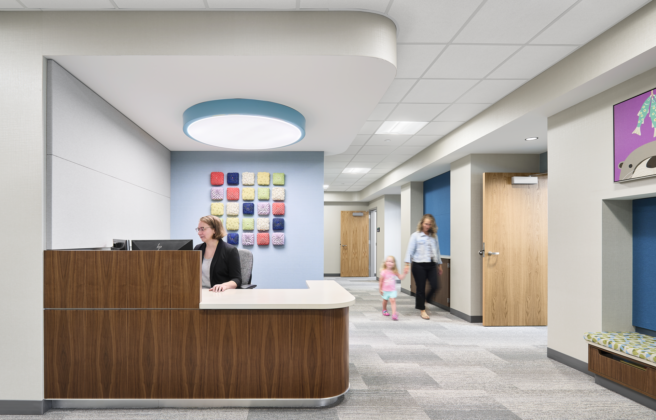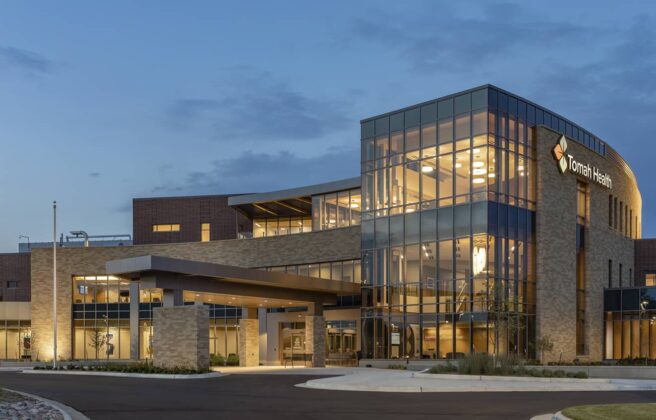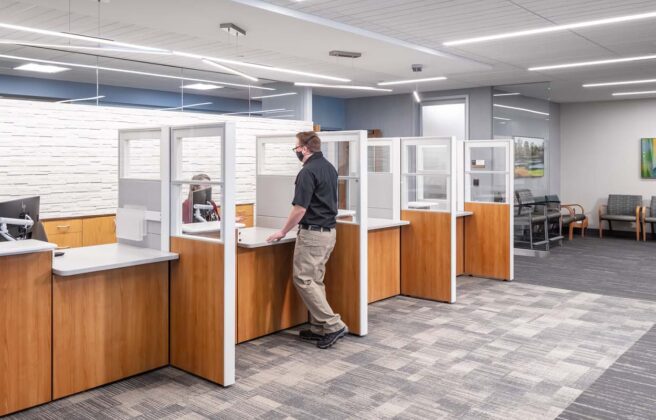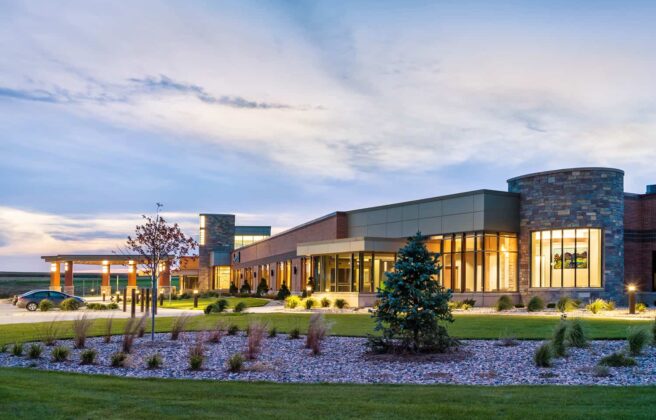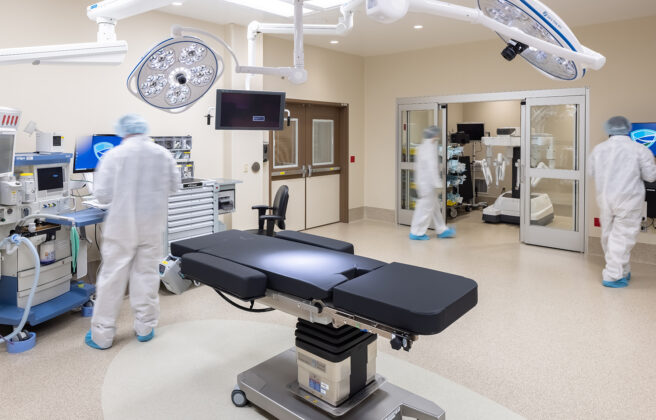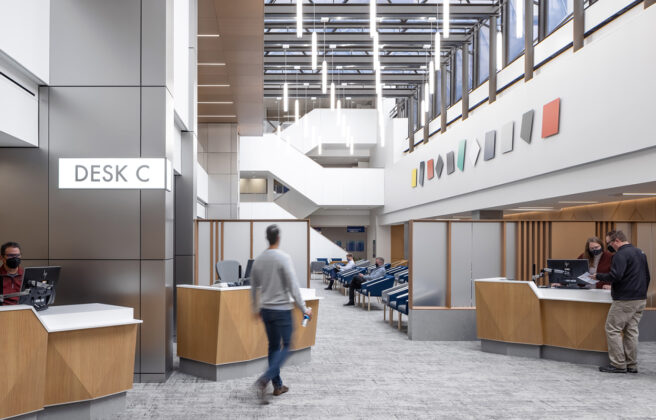In the rapidly evolving healthcare landscape, strategic facility planning extends far beyond the design and construction of buildings. It involves a thorough analysis of market dynamics, targeting optimal locations, assessing the existing condition of facilities, and aligning future growth projections with the right facility solutions.
At BWBR, we help optimally position healthcare systems to stay ahead of the competition and meet the changing needs of their communities. By examining key factors such as current and future potential market share, demographic trends and growth, and real estate portfolio alignment, we create enterprise-wide solutions that not only enhance patient care but also improve operational efficiency and financial sustainability.
Market Analysis
A comprehensive market analysis is the cornerstone of strategic enterprise master planning. By comparing the current market share of each service line with that of their competitors, healthcare systems can identify trends and opportunities for growth.
Analyzing historical data reveals whether there is opportunity for growth and a gain in market share gains if competitors have encroached on the market. Along with our healthcare planners, BWBR’s data analysis team customizes projections based on population and demographic trends to help forecast the growth or retraction of services, guiding strategic decisions for any system’s unique market.
Target Location Analysis
Understanding where to establish new facilities is crucial to setting organizations up for success. Our process involves mapping current campuses and competitor sites, identifying areas of population growth within the primary and secondary service area, then overlaying mass transit networks and drive time analysis.
This location gap analysis highlights underserved regions, guiding decisions on where to build new facilities or expand and modernize existing locations, while market analysis and key volume projections outline what services should be offered at each location and inform the facility program required to support projected patient volumes. Selecting an ideal location backed by data not only allows care to reach the right patients, but also lays the foundation for continued stability and growth.
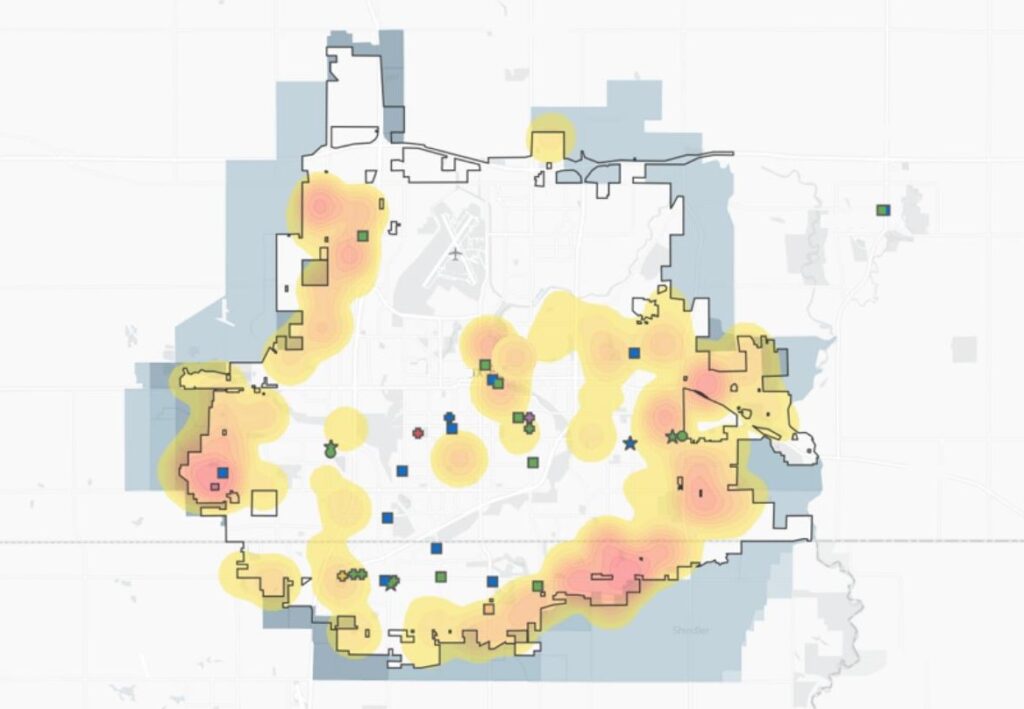
Metro population growth heat map
Assessing Existing Real Estate Portfolio
An inventory and assessment of current campuses and facilities provide insight into the state of the real estate portfolio of a healthcare system. Facilities with aging infrastructure, those that inhibit operational efficiency, and sites requiring excessive annual capital investment are identified.
Using this assessment, the BWBR team helps prioritize which facilities need upgrades or replacement to enhance operational efficiency and patient throughput. With strategic planning, building a new facility isn’t always the only option to meet changing needs — minor expansions and targeted renovations can also be used to achieve significant impacts.
Facility Master Planning
Facility master planning involves establishing construction projects that maximize both return on investment and market share capture while strategically addressing the issues facing an organization in both the short and long term. Phasing strategies are created to implement each project, along with a 5- to 10-year capital allocation timeline. The capital allocation plan gives clients a roadmap for how to realistically implement the overall strategic plan, creating a facilities playbook for the future of a healthcare system.
Strategic healthcare planning is a process that requires a deep understanding of market dynamics, demographic trends, and facility planning. By focusing on these essential factors, the BWBR team designs environments that not only meet the current needs of patients but can also adapt to future demands. This comprehensive approach helps healthcare systems remain competitive, efficient, and capable of delivering high-quality care in an ever-changing landscape.
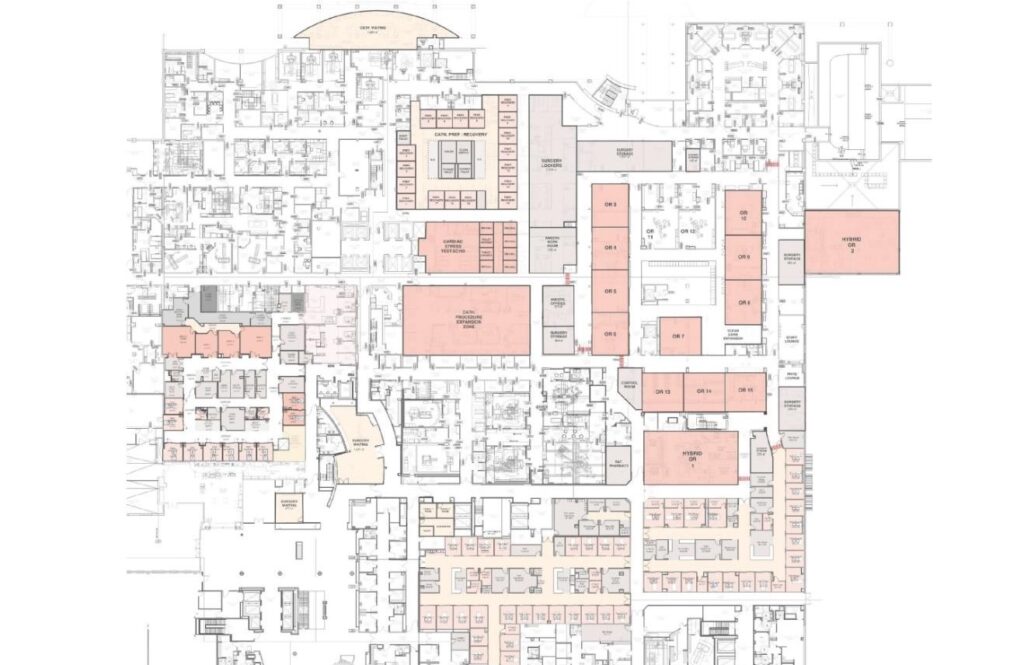
Facility master plan example



